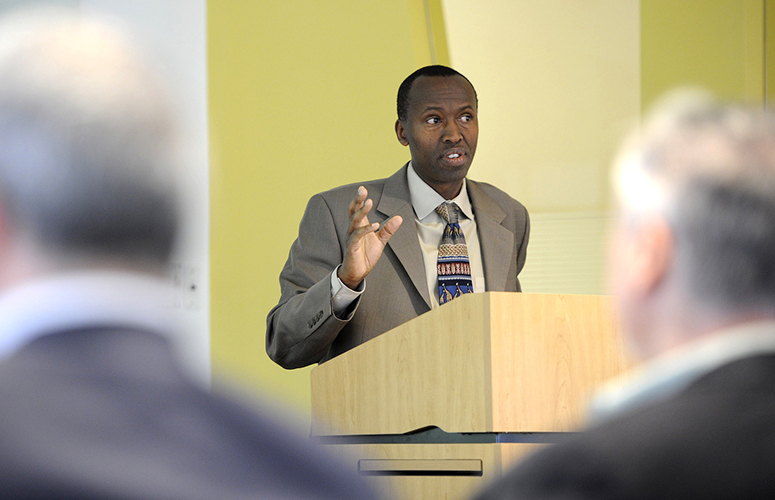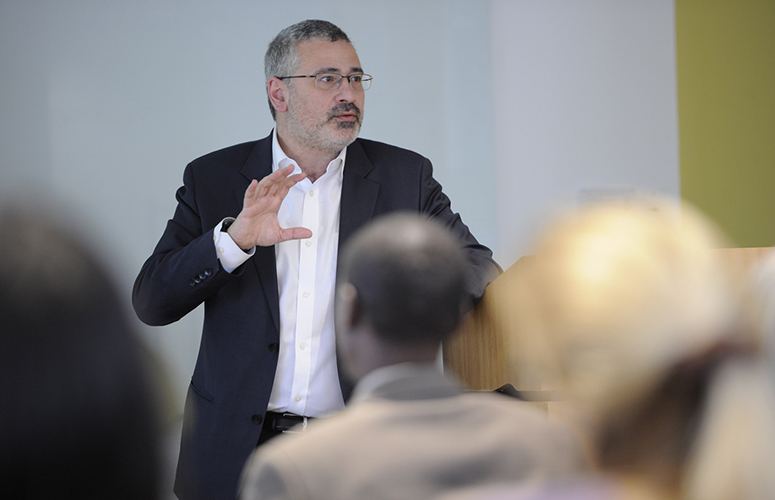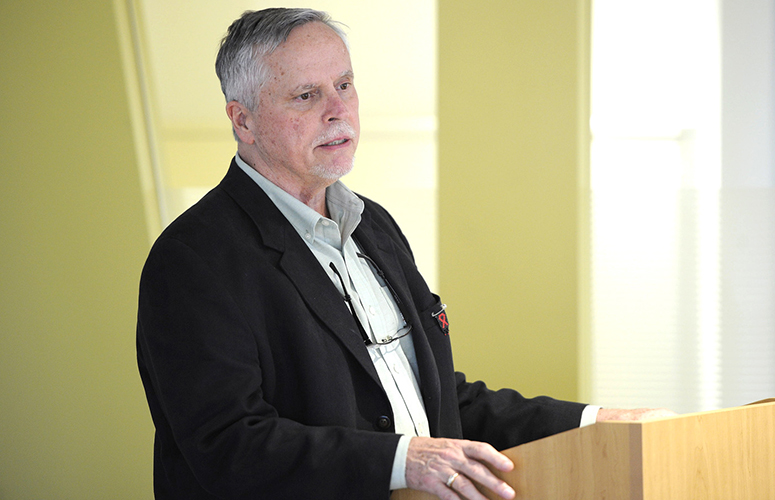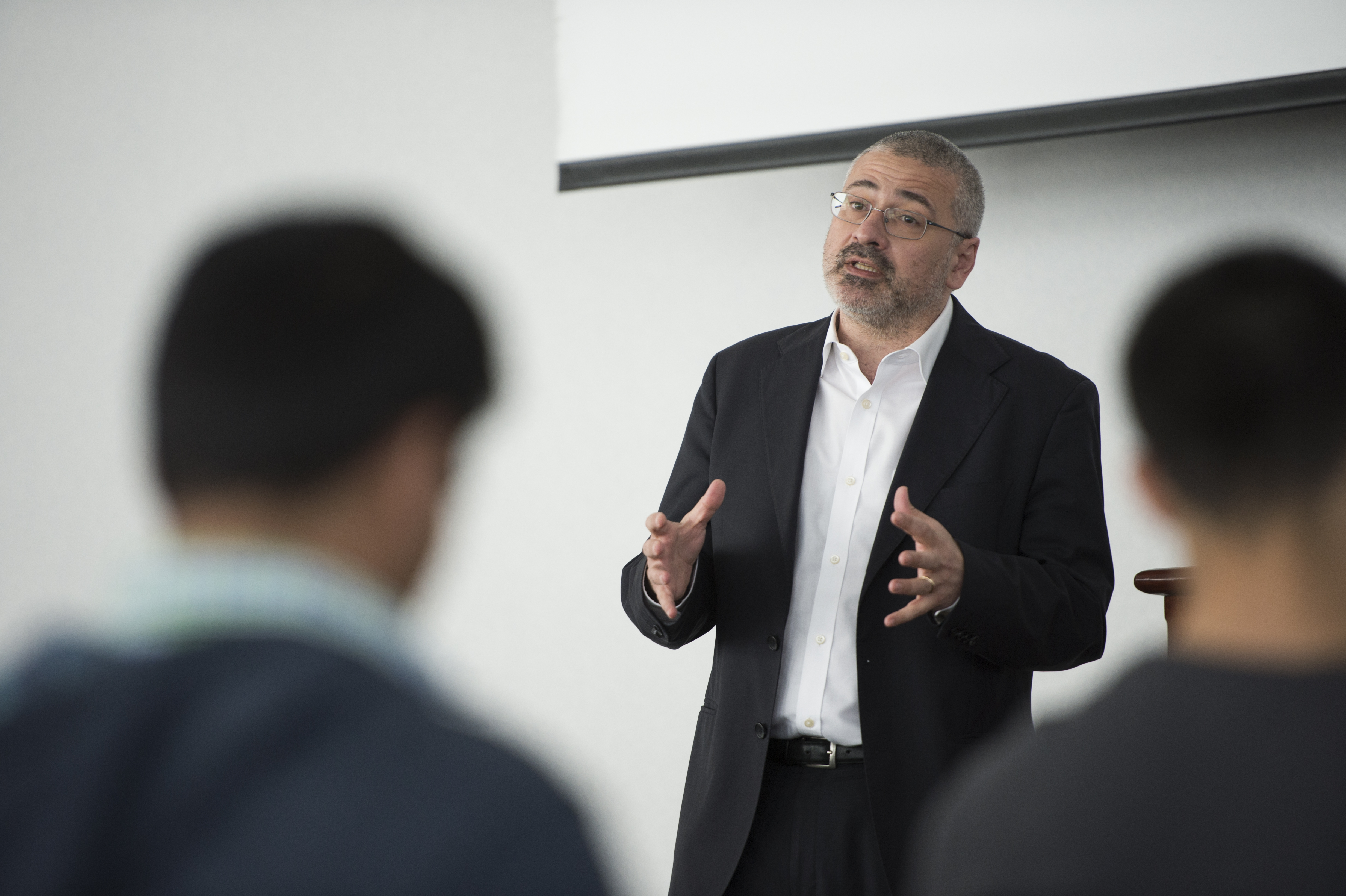by Thea Singer
The Zika virus continues its inexorable spread. April 6 updates from the World Health Organization and the Centers for Disease Control and Prevention provide the latest numbers:
A total of 62 countries and territories have documented cases of the Zika virus, reported WHO, with 1,069 cases of microcephaly and other birth defects suspected to be associated with the disease. Zooming in on U.S. statistics, the CDC reported 346 travel-associated cases here, seven of which had been sexually transmitted.
Northeastern researchers are working to be part of the solution. The agency updates coincided on Wednesday with an interdisciplinary panel discussion called “The Global Response to the Zika Pandemic.” The discussion featured three distinct perspectives on the crisis: Those of Alessandro Vespignani, Sternberg Family Distinguished University Professor of Physics, Computer Science, and Health Sciences; Richard Wamai, assistant professor in the Department of African American Studies; and law professor Brook K. Baker, who specializes in intellectual property and access to medicines. Robert L. Hall, associate professor in the Department of African American Studies, moderated the event, which was sponsored by the College of Social Sciences and Humanities.
The issues covered ran the gamut, from the origins and geographical distribution of the virus to misperceptions about the disease, from the association of microcephaly with Zika to policies that affect treatment options to the complexities of using network theory in tracking the disease’s spread.
Here are some key takeaways from the event:
Richard Wamai: On the association between Zika virus and microcephaly

Richard Wamai, assistant professor in the Department of African American Studies
“This still remains a big question,” said Wamai. WHO reported that between Oct. 22, 2015, and mid-March 2016, 6,480 cases of suspected microcephaly were reported in Brazil— “ground zero” for Zika and the birth defect, he noted. Some 2,000 of those cases were checked with brain scans, and 863, or 39 percent, of them were confirmed. Those numbers stand in stark contrast to the average number of cases reported each year in Brazil between 2001 and 2014: just 163.
“Of course, the uptick in the number of cases is causing the suspicion,” said Wamai, who then looked into the typical number of microcephaly cases in populations around the world. In the U.S. and Europe, for example, he found it was only about three out of 10,000. The official word from WHO on the subject, he noted, reflects the close association between Zika and the birth defect: “Zika virus has not been proven to be the cause of increased incidence of microcephaly in Brazil, but there is scientific consensus on the suspicion,” said Wamai, quoting director-general Margaret Chan.
There are many other causes for microcephaly, including syphilis, toxoplasmosis, rubella, and herpes simplex. “Those should also be investigated for their possible link to microcephaly,” Wamai said. Moreover, Brazil does not track the number of birth defects annually—a first step for establishing a baseline to compare current and future numbers against.
Alessandro Vespignani: On the difficulty of applying network modeling to the spread of Zika

Alessandro Vespignani, Sternberg Family Distinguished University Professor of Physics, Computer Science, and Health Sciences
Over the past 10 years, Vespignani, who is the director of Northeastern’s Network Science Institute, has modeled the spread of pandemics including the swine flu and Ebola. He is now working with a team modeling the spread of Zika.
At Northeastern, he and his colleagues create large-scale computational tools that incorporate “ultradetailed” maps of populations and their movement—“a synthetic world,” he called it on Wednesday—along with the many variables that affect how a specific disease evolves and spreads in the world. “The idea is to anticipate what will happen in the next two months, in the next six months, and so on,” he said, adding that “you have to do more than forecast,” say, how many cases will erupt in a particular period of time. “You have to provide situational awareness, intervention planning,” he said. You posit scenarios—for example, “What if we kill all the mosquitoes? What if we develop a vaccine?”—to understand the tradeoffs between cost and effectiveness.
Modeling the spread of the Zika virus is particularly challenging, Vespignani said, given the many unknowns. They include the timeline of events, the number of actual cases, where the disease started in each country and locale, and what fraction of the population has been infected by the disease.
“We were complaining about Ebola, but with Ebola we had information that was much more detailed. With Ebola there were small local outbreaks—we knew the transmission mechanism, and many, many elements. And even if there was underreporting, the system started to pick up weekly and we had data from the field.”
With Zika there’s an additional critical variable: the mosquito. In his previous modeling of diseases, Vespignani said, “only humans were in the loop. When you have a vector-borne disease, you need to know about the mosquitoes. And unfortunately, mosquitoes do not go around with a GPS and a mobile phone, so getting data on mosquitoes is not easy.”
Brook K. Baker: On policy decisions that affect treatment options

Brook Baker, professor of law specializing in intellectual property and access to medicines
Baker concentrates on two research areas: What is the appropriate incentive system for research and development of treatments for conditions such as Zika and Ebola—“what we might call neglected populations and neglected diseases”? And second, What should we do to improve affordable access to existing treatments? In particular, what role does the global intellectual-property system play in our not being prepared to provide such treatments now?
When you look at maps of the spread of the Zika virus, Baker pointed out, you see that it and “many so-called neglected tropical diseases” are concentrated in low-income warmer, tropical countries—or segments of countries with low-income populations. “That’s important,” he said, “because at present our IP system incentivizes biomedical research entities and companies to mainly focus research on medical conditions for which there’s a high rate of market return—in particular, medical conditions affecting rich people in rich countries, where either insurance or the government pays for medical products.”
How might we change a system that makes decisions about research for medical care based not on need but on geography and economics? he asked.
Originally published in news@Northeastern on April 11, 2016.

